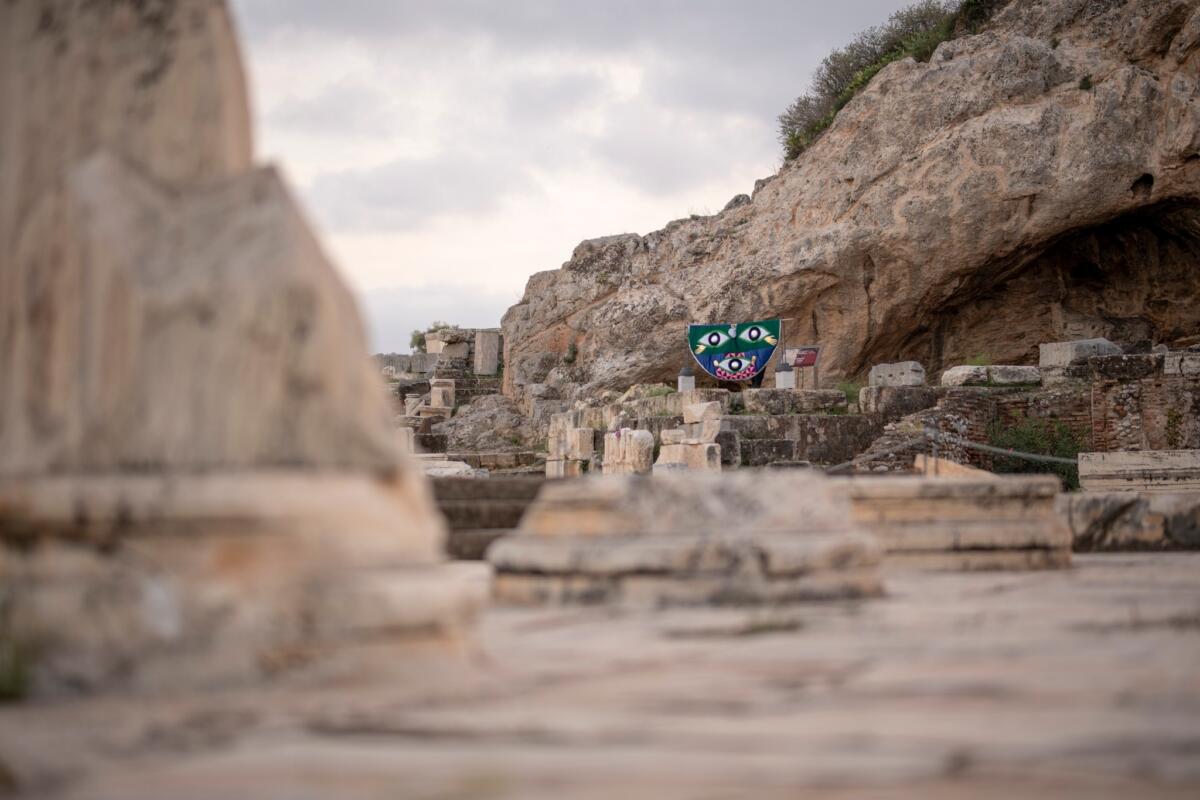
A feeling of melancholy is being experienced throughout different artistic projects in Athens this year, possibly reflecting the collective grief of a country marked by major losses – from the fifty seven people killed in the Tempi train crash in February, exposing the incompetence of public infrastructure, to the radical gentrification of Athens’ city centre belonging less and less to its citizens, to the summer wildfires – including the largest single fire in the history of the EU which decimated Dadia National Park – to the autumn floods which killed people and animals and caused serious damage. I have been reminded of the candlelit Epitaph processions, which every Easter go through the streets of Greece, symbolizing the funeral cortege and the burial of Jesus Christ, through several performances and performative walks in Athens in recent months. At the same time, these somber events had an emancipatory power for the collective experience, creating safe spaces for communities not only to share their mourning but also empowering us to transform our national dystopia into a political gesture.
The procession around the Archeological Site of Elefsina, But Don’t Tell Anyone curated by Joanna Warsza for the third edition of Mystery 19 Visual Arts Initiator, took place during two unexpectedly sunny and warm days last October as part of the program of the 2023 Eleusis European Capital of Culture. It can be considered one of those moments which perhaps accidentally (?), attuned with the collective sadness that we don’t typically have the time to deal with, which offered us a much needed way out, a chance to pause, to think, and to feel, together. Testing the ceremonial and mythical legacy of Eleusis (Elefsina), an industrial city on the outskirts of Athens, once one of the most important religious centers of antiquity and home of the Eleusinian Mysteries, the exhibition aimed to open up possible readings of death and loss in the land where according to myth, the earth goddess Demeter bid farewell to her daughter Persephone, abducted by the god of the underworld, Hades, every autumn, and welcomed her back each spring. It brought together new and existing works by five Greek and international guest artists invited by Warsza, along with five resident artists (both Greek and international), selected after an open call to participate in the third iteration of the Mystery 19 Visual Arts Initiator artist-in-residence programme, seeking to rethink the legacy of the unique and obscured pagan rites of the Eleusinian Mysteries in the quest for a contemporary definition of initiation and secrecy in relation to the need to reconnect with the planet.
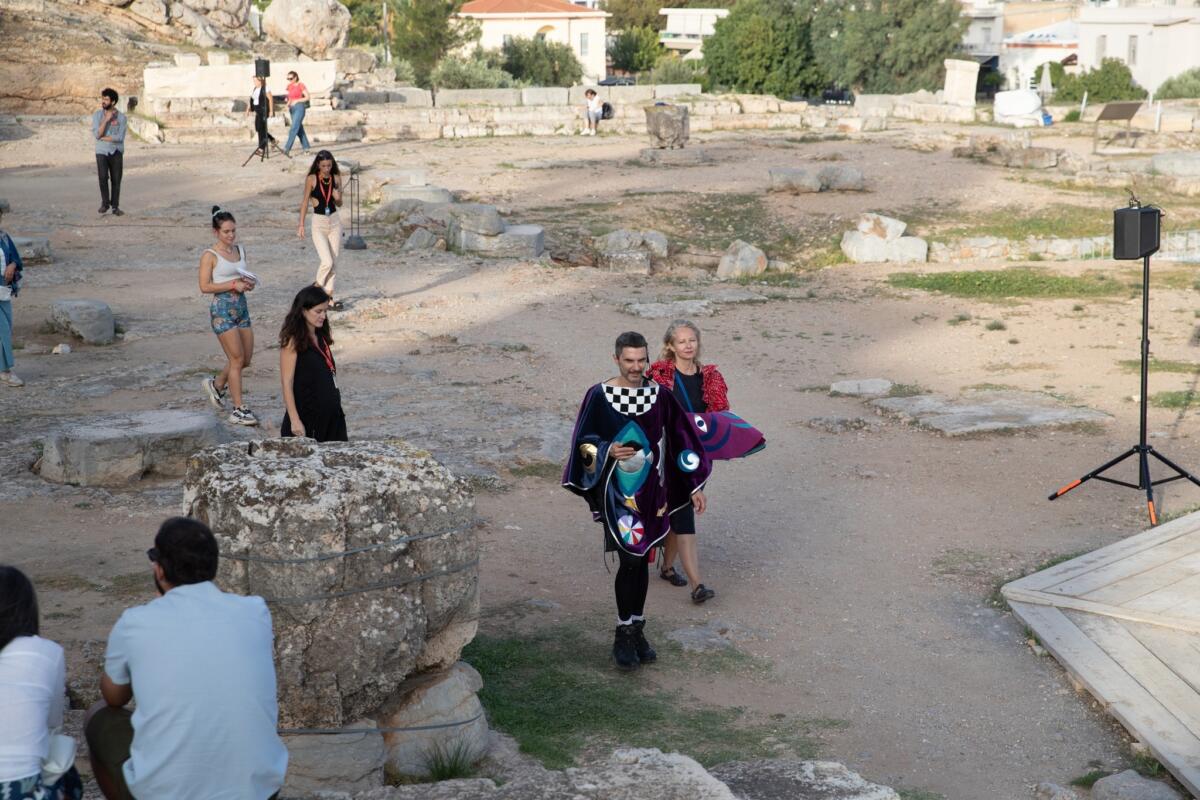
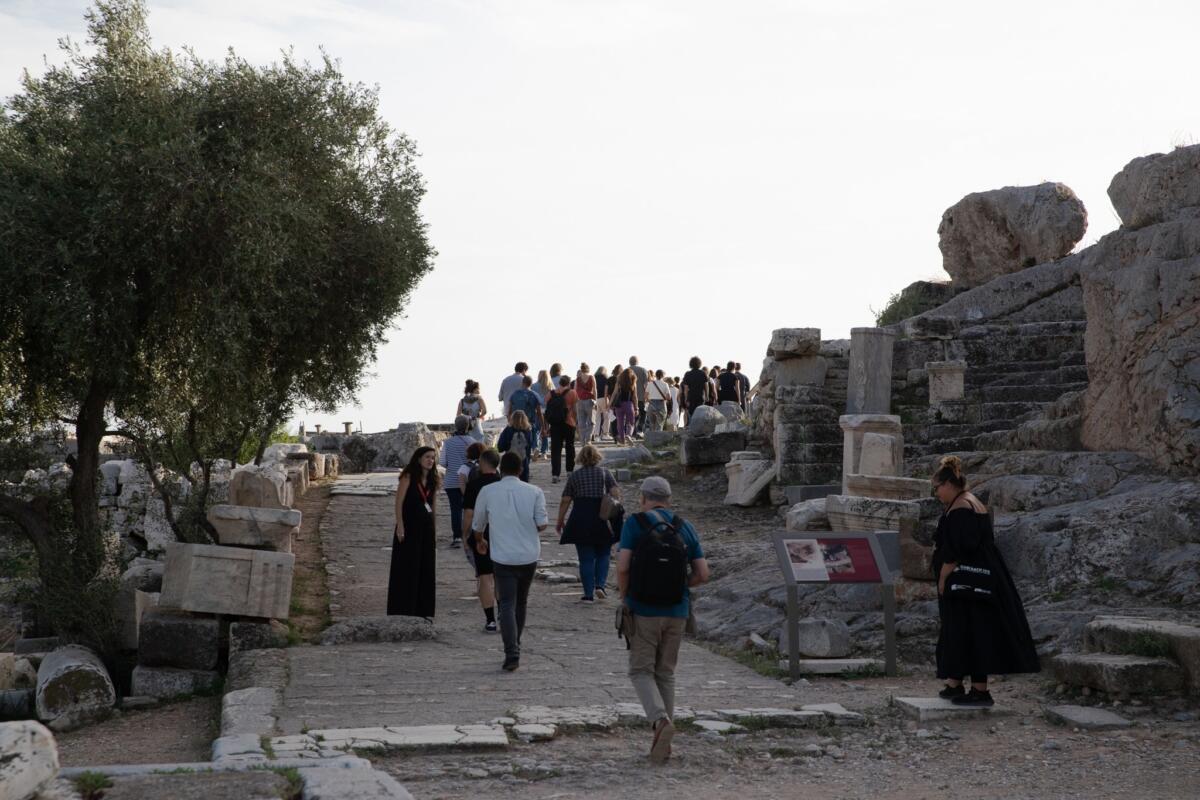
Marking the first time a contemporary art exhibition took place at the archeological site of Eleusis, alas only for two days, Mystery 19 Visual Arts Initiator III – But Don’t Tell Anyone was better experienced by taking part in one of the daily processions which guided us slowly and silently (for the most part) through a predetermined route around the works. During the procession Angelo Plessas, whose work navigates technoshamanism, intersectionality, and spirituality, had the role of invigilator, leading the procession from space to space, all outdoors among the archeological ruins, stopping to read a mandala at every point. Without prior knowledge of Plessas’ work the piece could feel slightly superficial. Although too direct at times, The Mandala System (2023), which culminated in a collective meditation among the ruins, incarnated the challenges and limitations of the spiritual turn in art posing the question of how can we distinguish authentic spirituality from neoliberal spirituality, especially in the capitalized and colonized digital world that controls our desires. Probably the most meditative moment of the exhibition took place at Telesterion, once the great hall and sanctuary in Eleusis, one of the primary centers of the Eleusinian Mysteries, where Susan Philipsz’ audio installation The Wind Rose (2023) produced atonal sounds generated by blowing through ten conch shells from various parts of the world, offering us ten moments to listen to the wind, our breath, and to feel the energy of the space.
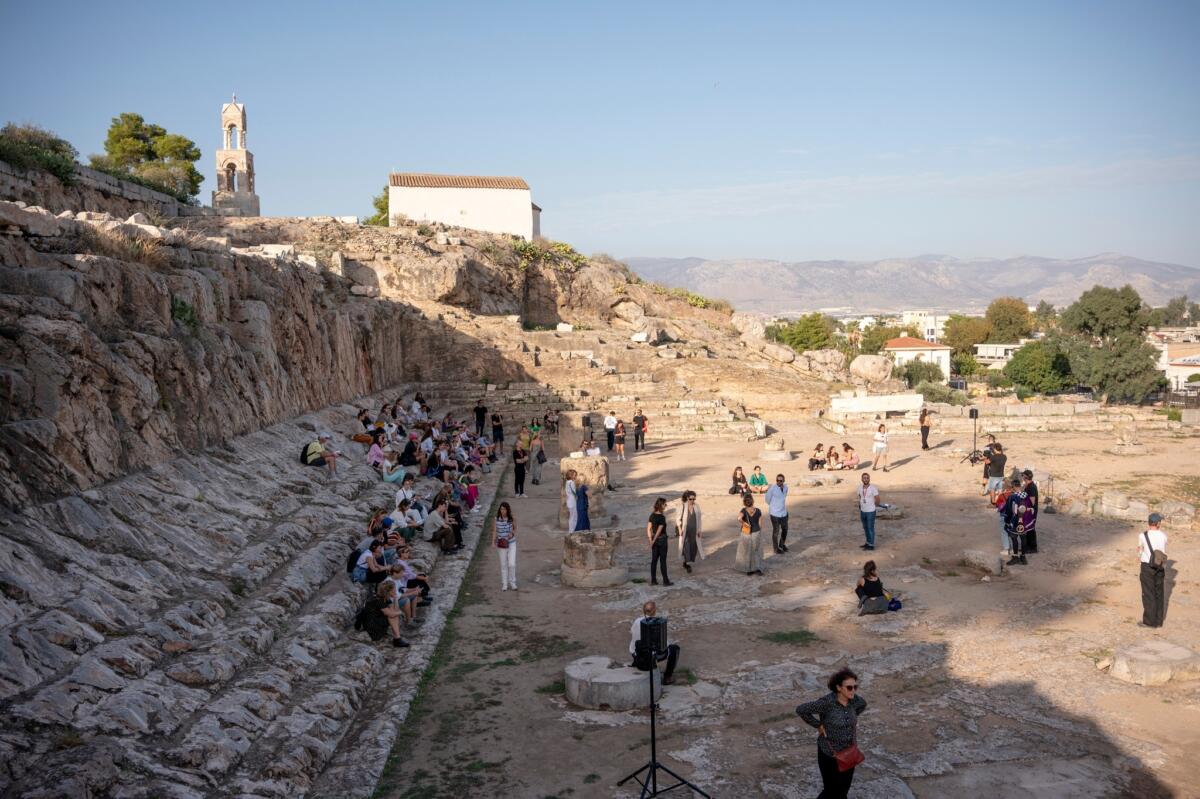
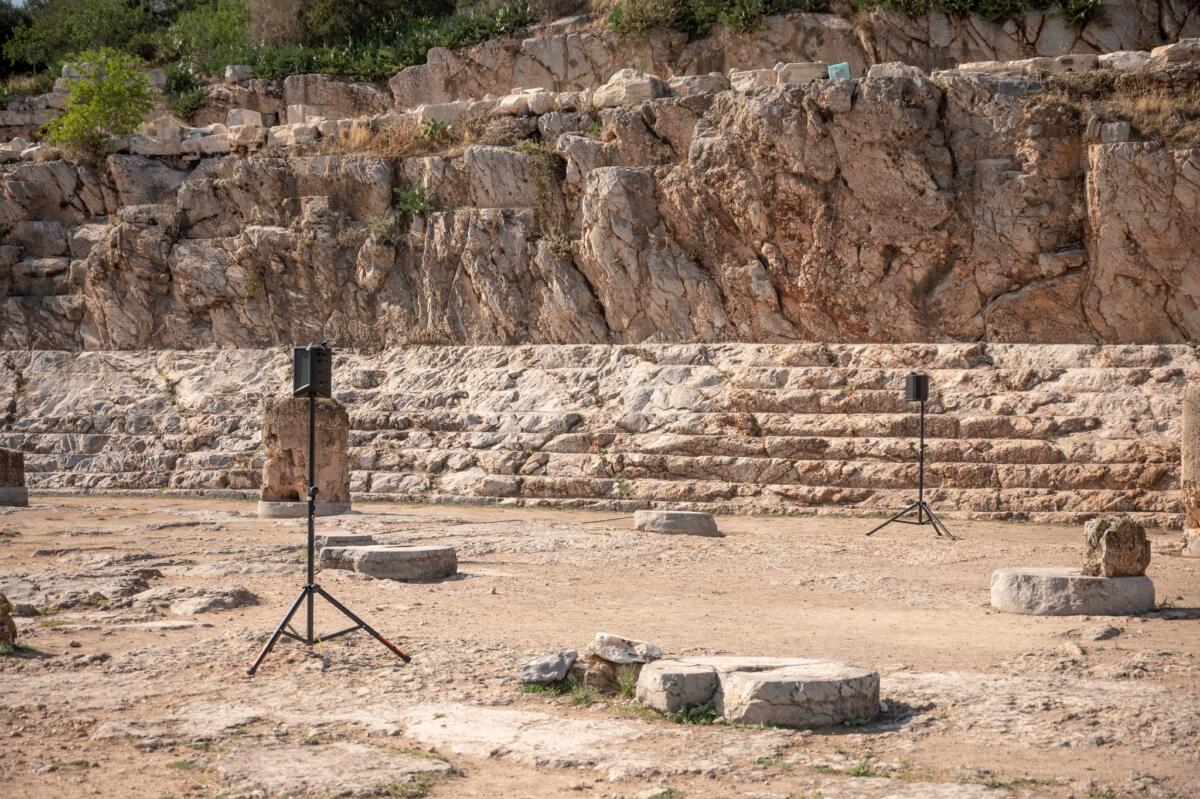
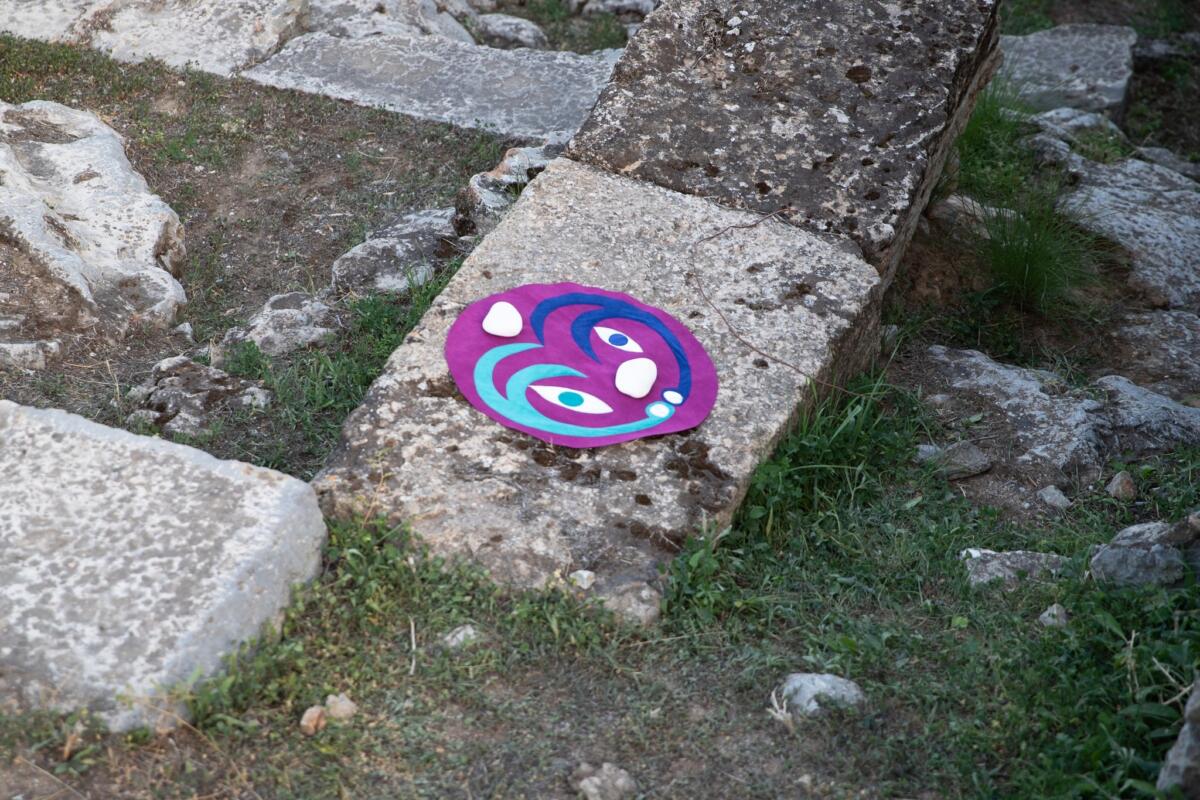
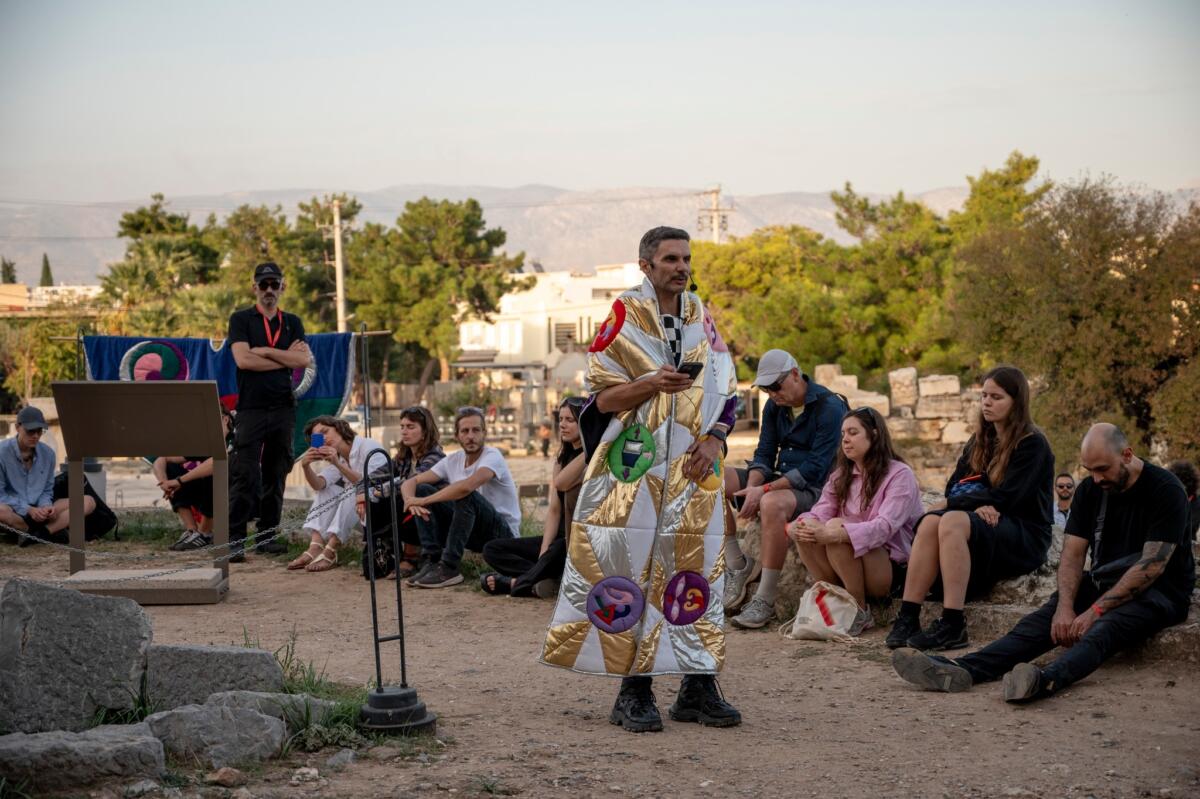
Yorgos Sapountzis’ anti-monumental scaffoldings sitting besides the ancient ruins, Raster Baste – Familie sammelt Wildspargel (2012) and Raster Baste – Familie Im Park (2012), made of simple aluminum tubes in bright colors, in a way brought the anarchic character of the city of Elefsina into the archaeological site in a tender, playful way, referencing his childhood memories with his family foraging for wild asparagus. Disrupting the logic of public space and its official monuments, as he has done already with his performances around different statues in Athens, Sapountzis creates cheeky, moving environments which tease us to think differently about our surroundings. Likewise, in a more literal and descriptive way, yet still inventive and poetic, Athina Koumparouli’s installation Missing Spaces (2023), guides us to an inaccessible wooden ladder so that we can look into a deep hole where a giant fig tree grows between huge walls, in spite of earlier attempts to cut it down, as we learn. The ladder, hanging above the hole, is complemented by a map similar to information points in various archeological contexts. This elliptic map, which for me is more powerful than the ladder itself, seems like a compass which brings to our attention the landscape that has been excluded from the contemporary narrative of the archaeological site, like the fig tree, but also the visually inaccessible seafront, a constant space of negotiation between the city and the port authorities, or the nearby mountain cut off by the mines. By putting these loaded places surrounding the archeological space into the map, Koumparouli points to a contemporary archeology of waste/d city narratives. Moreover, the hole and the fig tree she highlights bring to mind the cycle of the seasons and the passage to the Underworld which is linked to the mythology of the site. But at the same time, they remind us of the more-than-human life of the place (think, for example, of the fig tree’s resistance to being cut down and what an archeological site would be without the protection of the idyllic nature surrounding the ruins) – interlocking with the current interest in the decolonization of human-nature relations, indigenous peoples and ecofeminist notions of the existence of a common natural world.
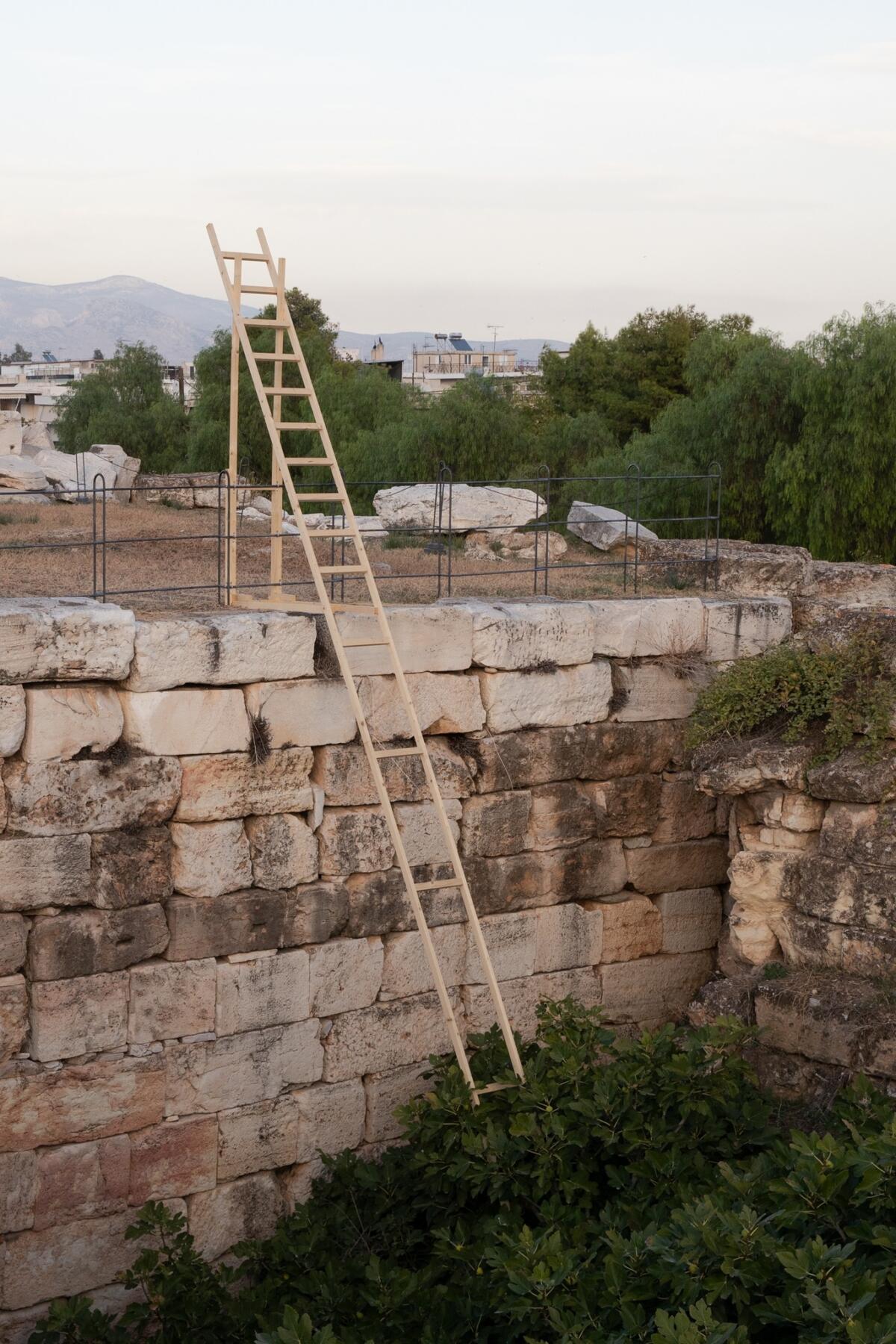
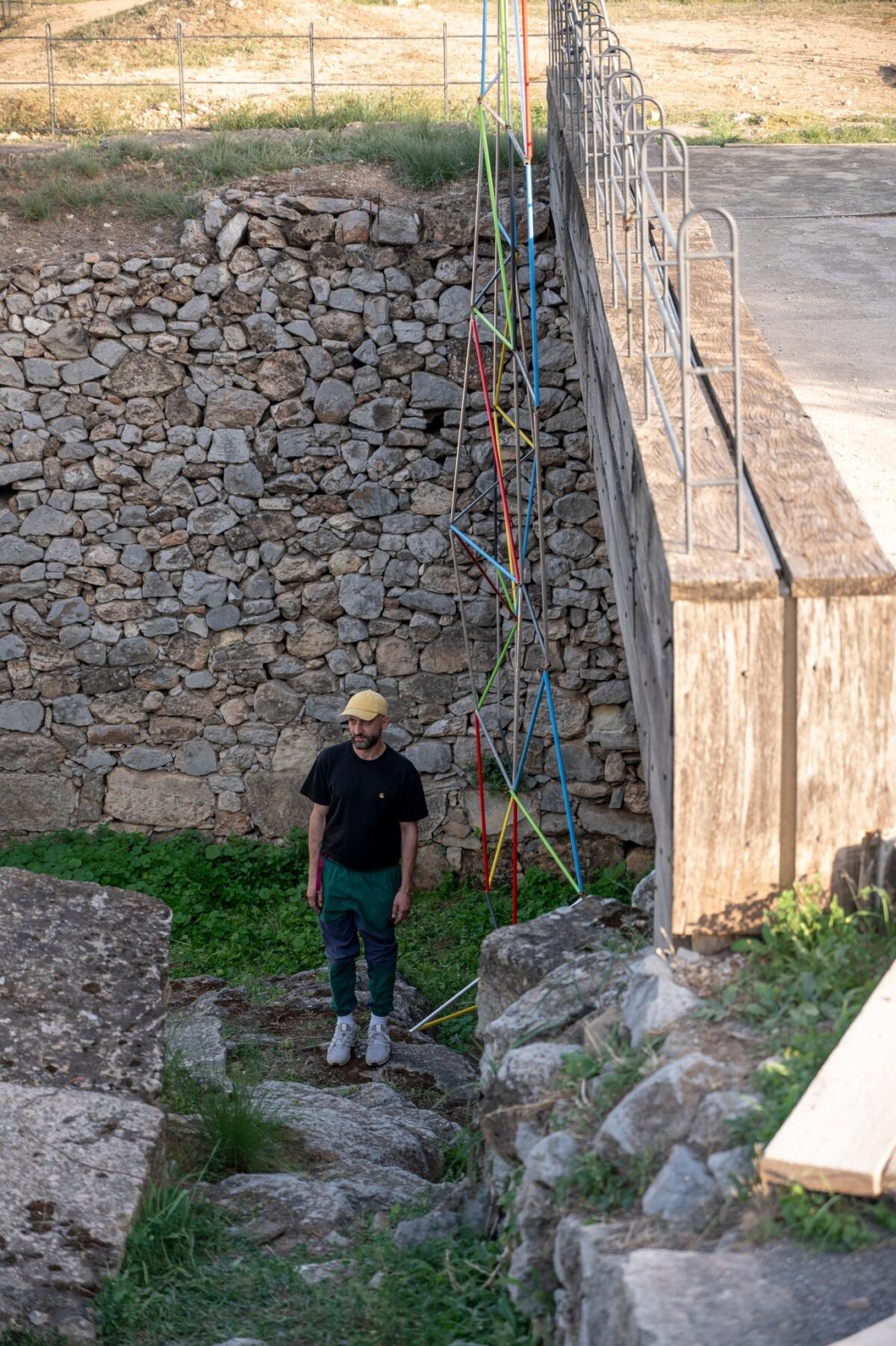
Several works aimed to mobilize our senses and make the procession a more somatic experience, connecting the ancient rituals to the contemporary problems of Eleusis, but sometimes the emphasis on symbolism and allegory obscured the effect and instead limited it to a more one-dimensional experience, like, for example, in Alex Wolframm’s Use this scent to increase realism (2023), which replaced the fragrance of the narcissus with that of wildfires and pollution, emanating from a vase of roses that we stood in line to smell. However the dominating smell of roasted meat coming from the nearby grill taverns caught our attention even more, penetrating into the narrative of the exhibition, making one wonder what the moment we were intended to experience had to do with the here and now of the city. Other artists took up the role of scavenger around the streets of Elefsina, bringing into the exhibition found elements, as in Flavia Stagi’s Contact routes, Starting from one (2023), a landscape of fabrics bearing traces of everyday city remnants, or Heidi Voet’s From a moment almost too brief to matter (2023), concrete castings of used or discarded balls which were collected in the city and transported to the site, forming the constellation of Eridanus, animated through a collective performance. These practices reminds us of Panagiotis Farmakis, an Elefsinian wanderer, who filmmaker Filippos Koutsaftis captured in his legendary movie Agelastos petra (2000), constantly and carefully picking up ancient remenants strewn about the city, bringing them inside the site trying to heal Eleusis and bring its neglected legacy tolight. Nevertheless, the collected fragments in works like the ones mentioned above seem a bit over-aestheticized and do not really suggest alternative narratives rooted in the city’s specificities. James Bridle, on the other hand, gives a more practical and contemporary reading of the Eleusinian myths, constructing three usable solar panels bearing three of the symbols of the mysteries, mounted on scaffolding to supply electricity for another artwork at the site. Continuing, in this way, his work on offering practical solutions which reduce our footprint on the earth, asks also how we can repair our relation with it in a particularly polluted city whose ancient legacy was completely ignored during the building up of the industrial zone.
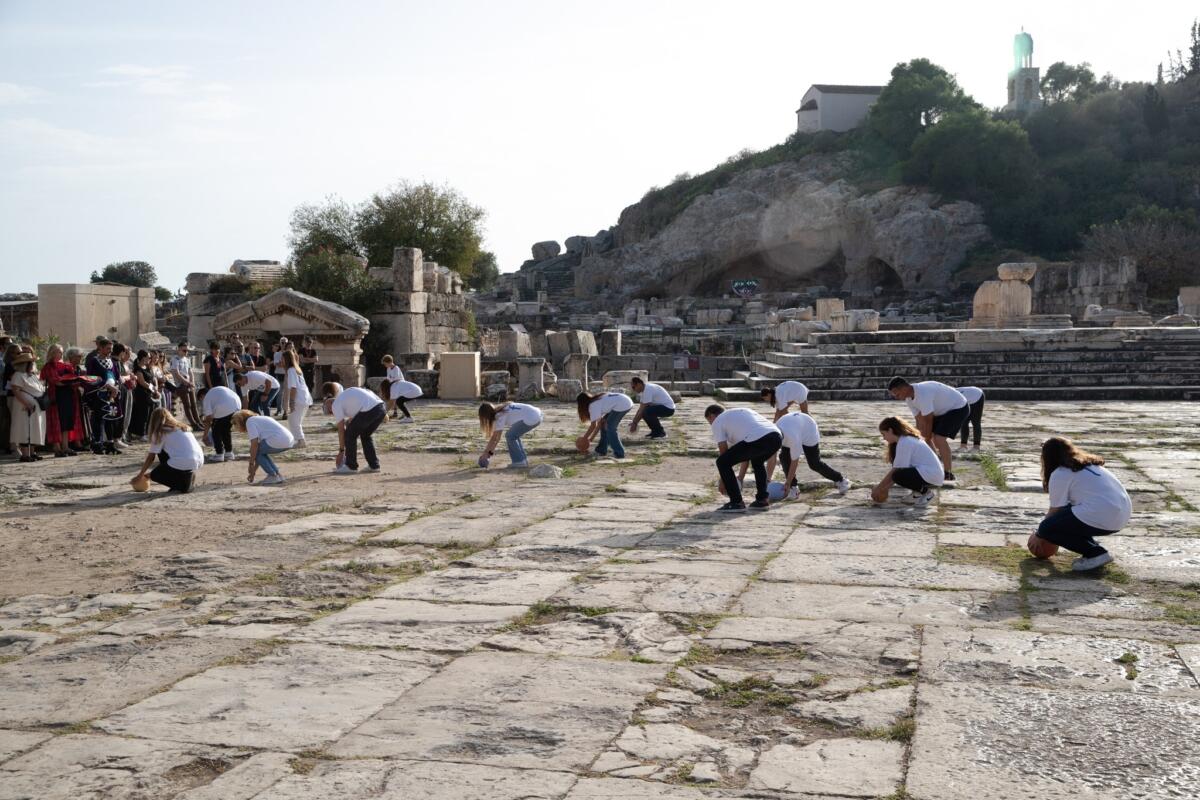
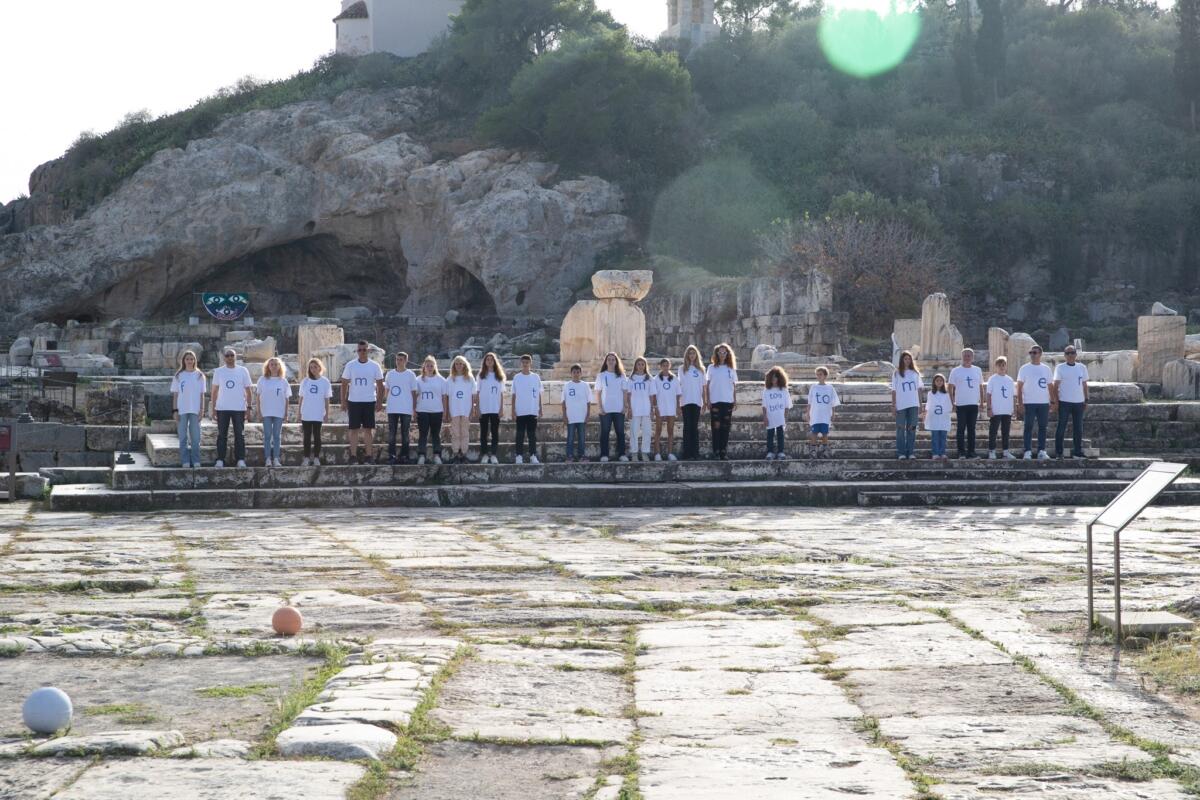
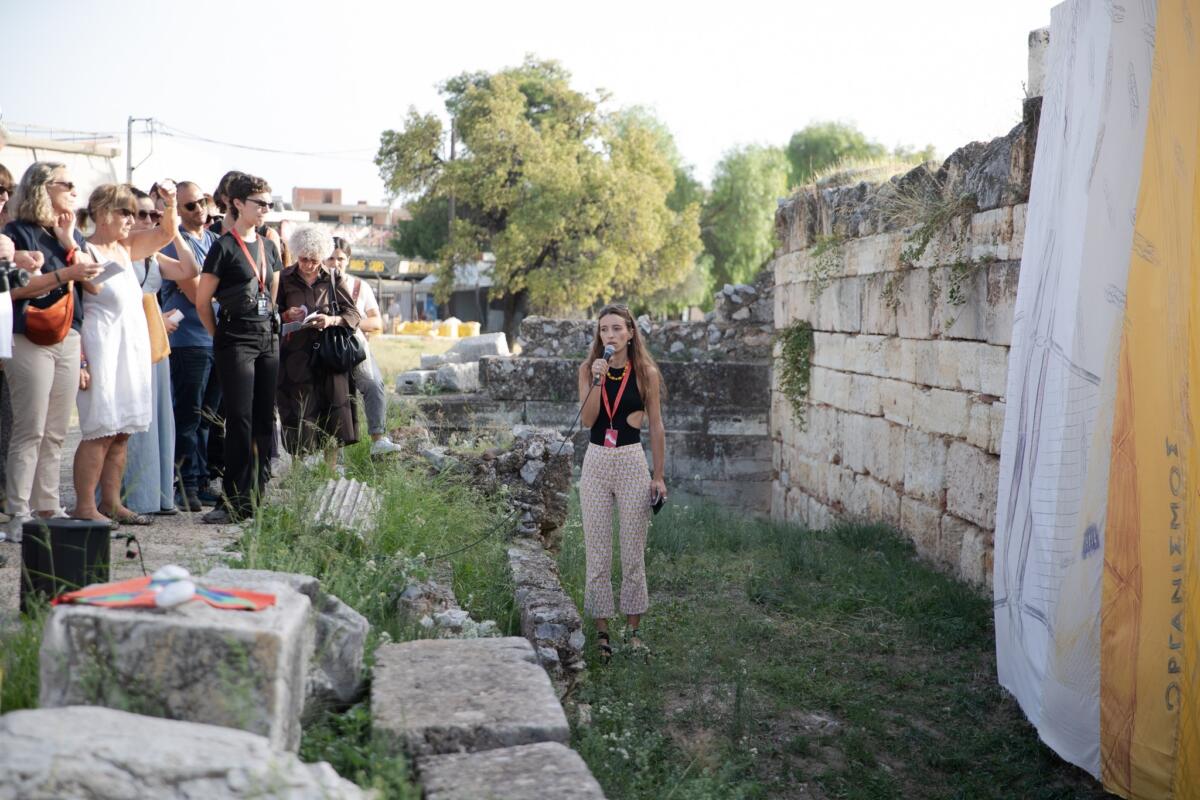


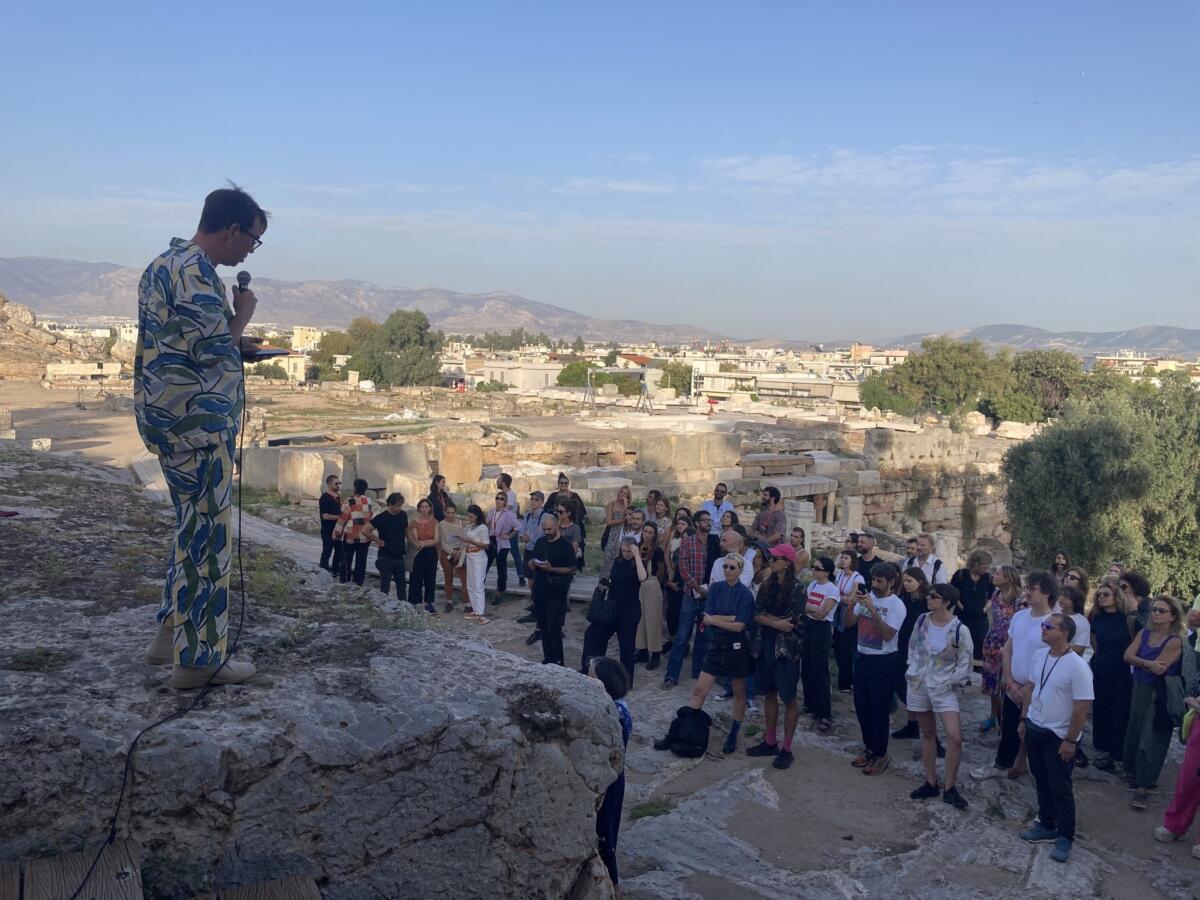
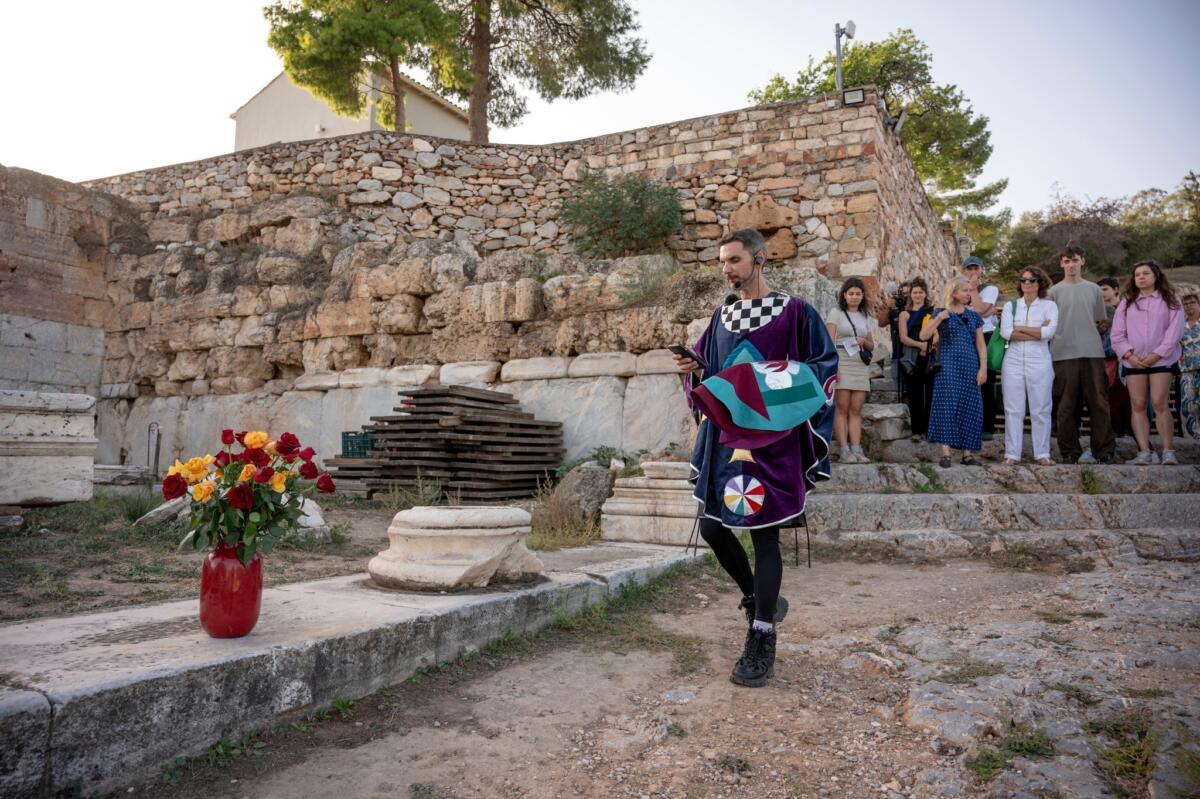
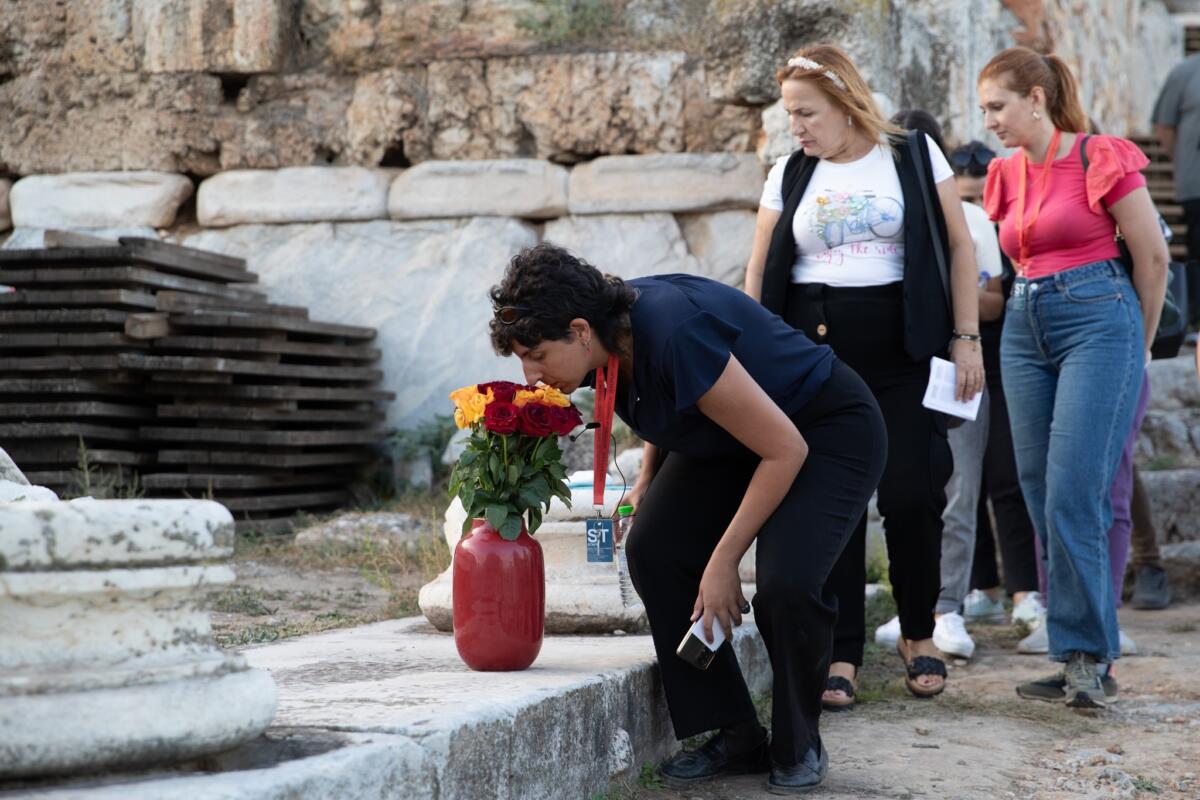
A timely take on the idea of the mystery, touching on issues concerning archeological legacy and its decolonization, was Vlad Brăteanu’s Offerings (2023), for which the artist presented three wooden crates which contained unidentified archeological objects, set in the shadow away from tourists gazes. We are only left with speculations on their origin and future (were they borrowed from or returned to the museum?), playing with our anticipations and reminding us the obscure routes behind the formation of a museum collection and of national patrimony in general, as well as the stakes involved in the call for the restoration of knowledge.
At the end of our route, in an in-between space of the archeological site, next to the exit not usually used by tourists, where found objects and artefacts from all around the city of Elefsina are gathered, resident artist Esmeralda Momferratou, for her work A quarter of an hour, ahead or behind (2023), “planted” recorded audio from local youngsters speaking about their memories of smells and the rituals they performed growing up in the city. Among the artefacts, forming an affectionate collective portrait which, although too lyrically at times, we were reconnected with the local reality outside the serenity of the ancient ruins.
If only more complex “secrets” of the present and recent history of Eleusis, a city where, for example, alt-right politics have found a fertile ground despite the refugee background of a large number of its citizens, would have made their way into the idealized ancient scenery, this cherished collective moment of the exhibition would have been even more transformative. In that way, such a procession would maybe feel less like a refreshing, meditative art/tourist break disconnected to what is happening in “real” life.Give us more clues for rethinking our connection with the earth, nature, and the remains of history in a more emancipatory way. Help us to claim a new, active relation with patrimony instead of the expected collective passiveness.
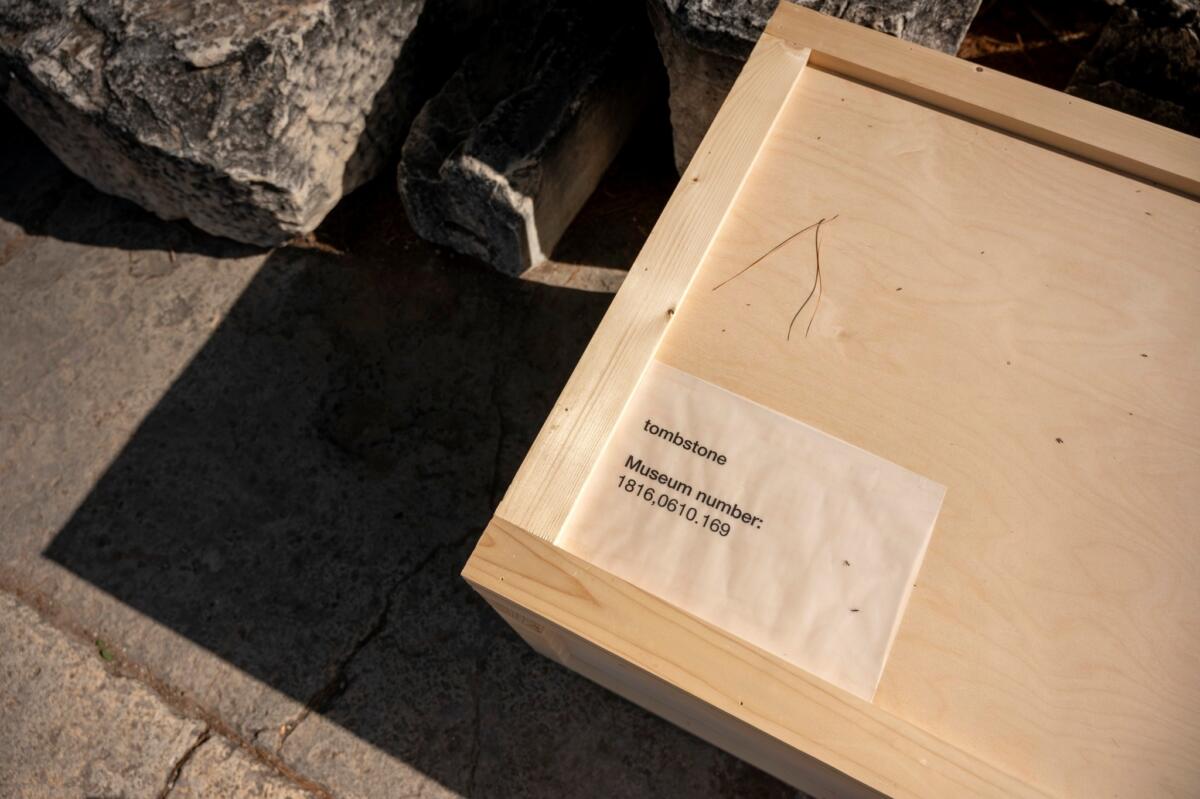
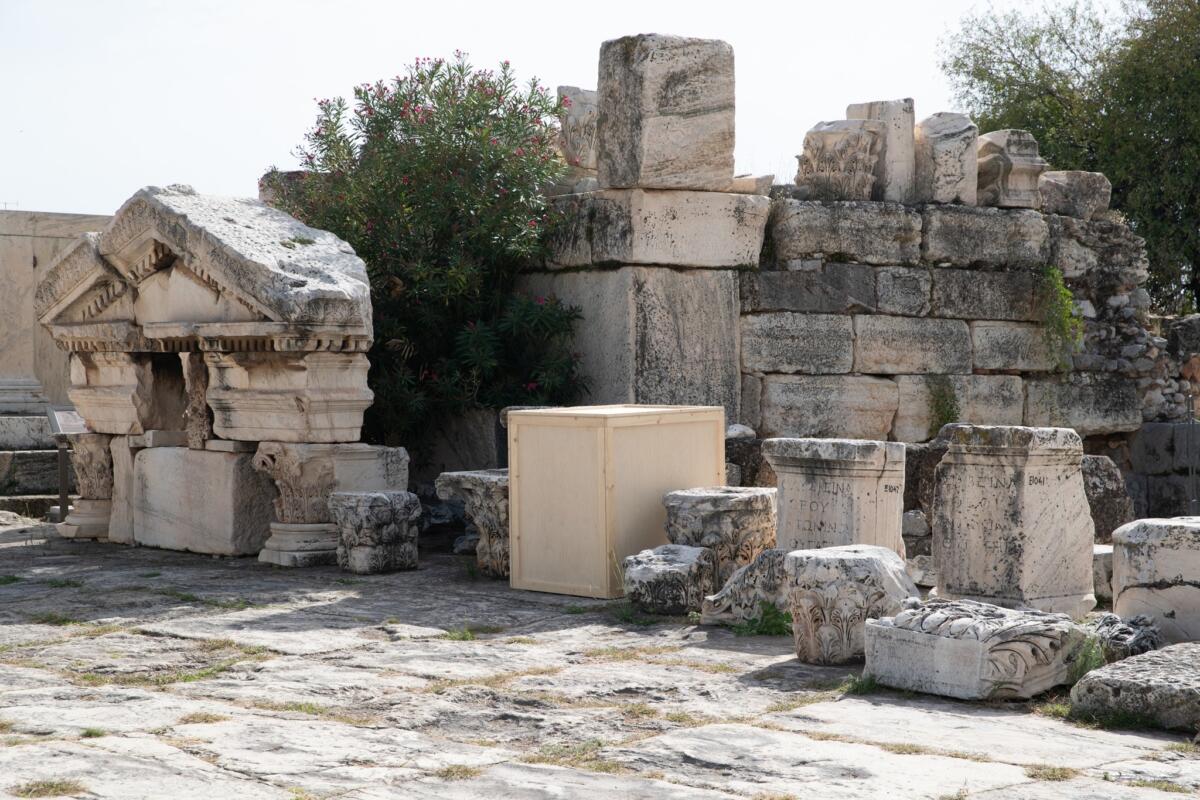
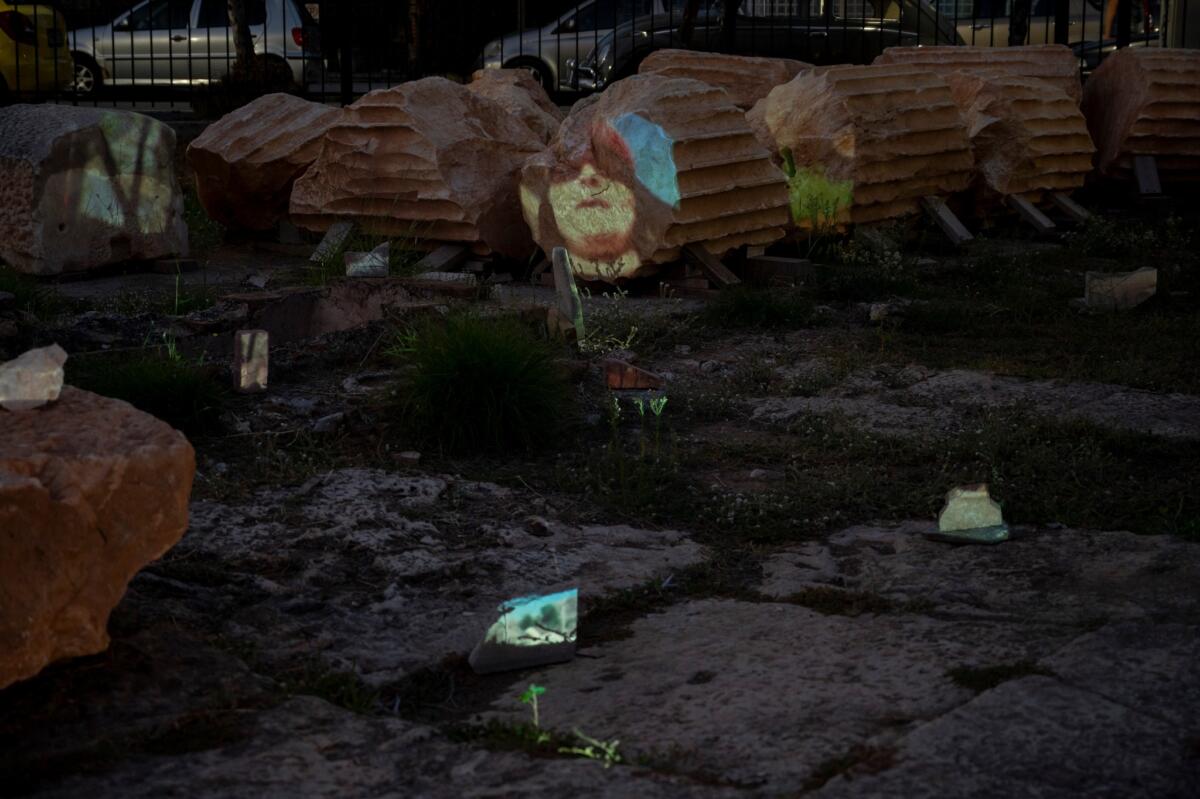
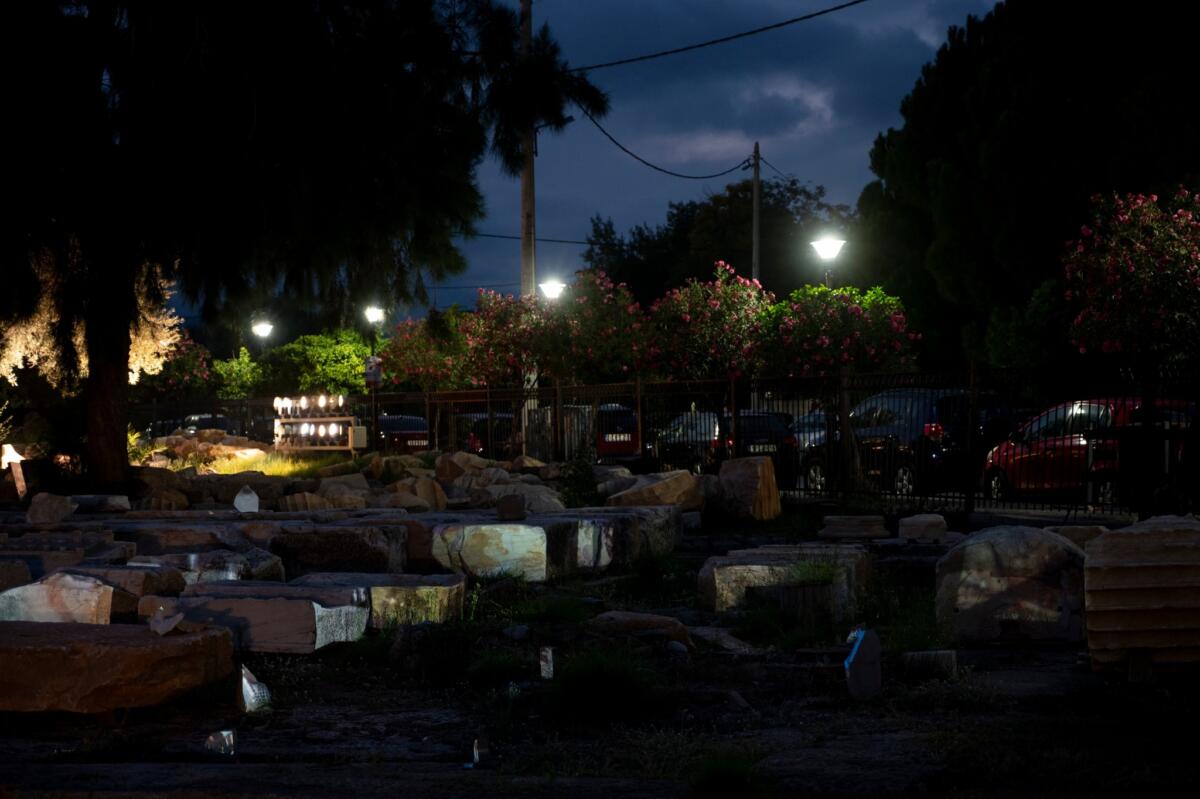
Imprint
| Artist | Vlad Brăteanu, James Bridle, Athina Koumparouli, Esmeralda Momferratou, Susan Philipsz, Angelo Plessas, Yorgos Sapountzis, Flavia Stagi, Heidi Voet, Alexander Wolframm |
| Exhibition | Don't Tell Anyone. Exhibition-procession on Elefsinian Mysteries |
| Place / venue | Concept of legacy project Mystery 19 Visual Arts, Initiator: 2023 Eleusis |
| Dates | October 21-22, 2023 |
| Curated by | Joanna Warsza |
| Photos | Vangelis Gkinis |
| Index | Alexander Wolframm Angelo Plessas Athina Koumparouli Despina Zefkili Esmeralda Momferratou Flavia Stagi Heidi Voet James Bridle Joanna Warsza Susan Philipsz Vlad Brăteanu Yorgos Sapountzis |
